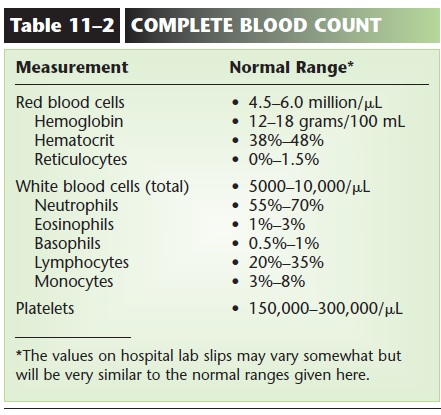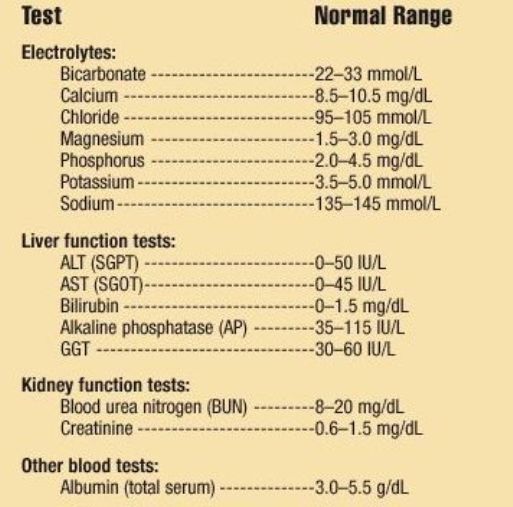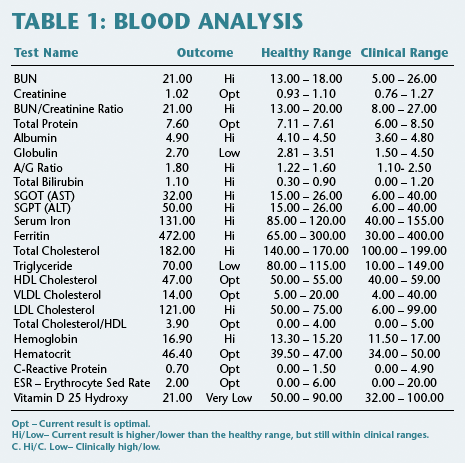Lab test alt normal range. ALT Blood Test: Normal Range, High & Low Results, Causes & Implications
What is the ALT blood test. How is the ALT test performed. What do high ALT levels indicate. What causes low ALT levels. How to interpret ALT test results. When should you be concerned about ALT levels. What lifestyle changes can help improve ALT levels.
Understanding the ALT Blood Test: Purpose and Procedure
The ALT (Alanine Aminotransferase) blood test, also known as SGPT (Serum Glutamic-Pyruvic Transaminase), is a crucial diagnostic tool used to assess liver health and function. This enzyme is primarily found in liver cells and is released into the bloodstream when liver damage occurs.
What is the purpose of the ALT test?
The main purposes of the ALT test are:
- To detect and measure liver damage
- To monitor the effectiveness of liver treatments
- To screen for liver diseases
- To assess overall liver function
How is the ALT test performed?
The ALT test is a simple blood test that typically follows these steps:
- A healthcare professional cleans the area, usually on the inside of the elbow or back of the hand
- A needle is inserted into a vein to draw a small amount of blood
- The blood sample is collected in tubes and sent to a laboratory for analysis
- Results are usually available within a few days

It’s important to note that certain medications may affect ALT levels. Patients should inform their healthcare provider about any medications, supplements, or herbs they are taking before the test.
Interpreting ALT Test Results: Normal Range and Variations
Understanding ALT test results is crucial for assessing liver health. The normal range for ALT can vary slightly depending on the laboratory and the individual’s age and sex.
What is the normal range for ALT levels?
According to the Exeter Clinical Laboratory International, the reference ranges for ALT are:
- Males: 10 – 41 U/L (units per liter)
- Females: 10 – 33 U/L
It’s important to note that “normal” can vary between individuals and laboratories. Always consult with a healthcare professional to interpret your specific results.
How do ALT levels change with age?
ALT levels can fluctuate with age:
- In healthy children, plasma ALT activity is typically lower than AST (Aspartate Aminotransferase) until 15 to 20 years of age
- From ages 20 to 60, plasma ALT activity tends to be higher than AST activity
- After age 60, ALT and AST activities become roughly equal
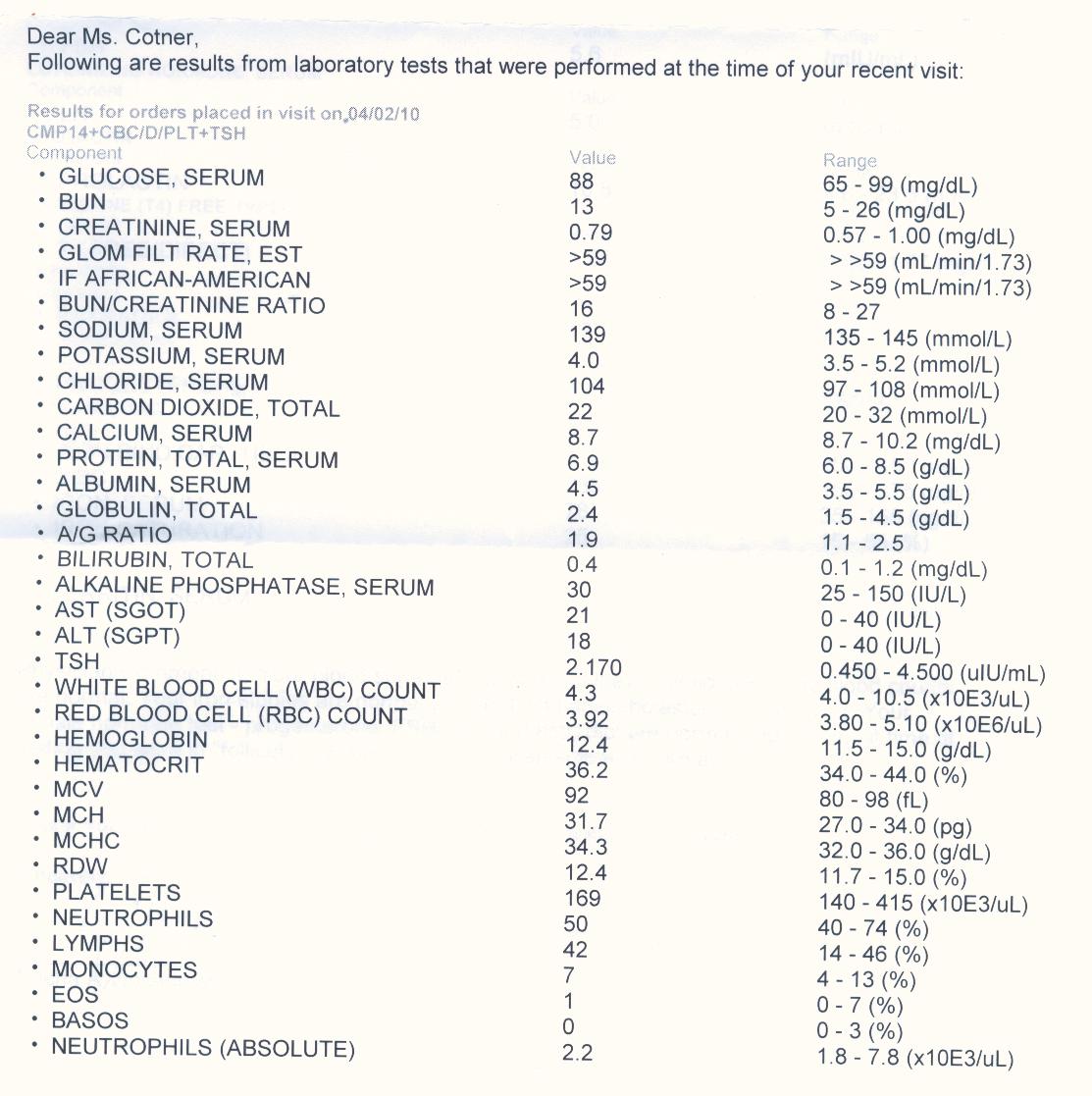
Elevated ALT Levels: Causes and Implications
Elevated ALT levels often indicate liver damage or disease. The extent of the elevation can provide clues about the underlying cause.
What causes significantly elevated ALT levels?
ALT levels can be much higher than normal (up to 50 times the upper limit of normal) due to:
- Acute viral hepatitis infections
- Liver damage caused by certain medications
- Severe liver diseases
What are other reasons for elevated ALT levels?
Moderately elevated ALT levels may be caused by:
- Excessive alcohol consumption
- Mononucleosis
- Liver or gallbladder diseases (e.g., gallstones, liver cancer, liver failure)
- Muscle injury
- Certain medications
How do ALT levels correlate with different liver conditions?
The relationship between ALT levels and various liver conditions can be summarized as follows:
- Viral hepatitis: ALT levels 10-40 times the upper limit of normal
- Alcoholic hepatitis: ALT levels 2-8 times the upper limit of normal
- Toxic or ischemic liver injury: ALT levels more than 40 times the upper limit of normal
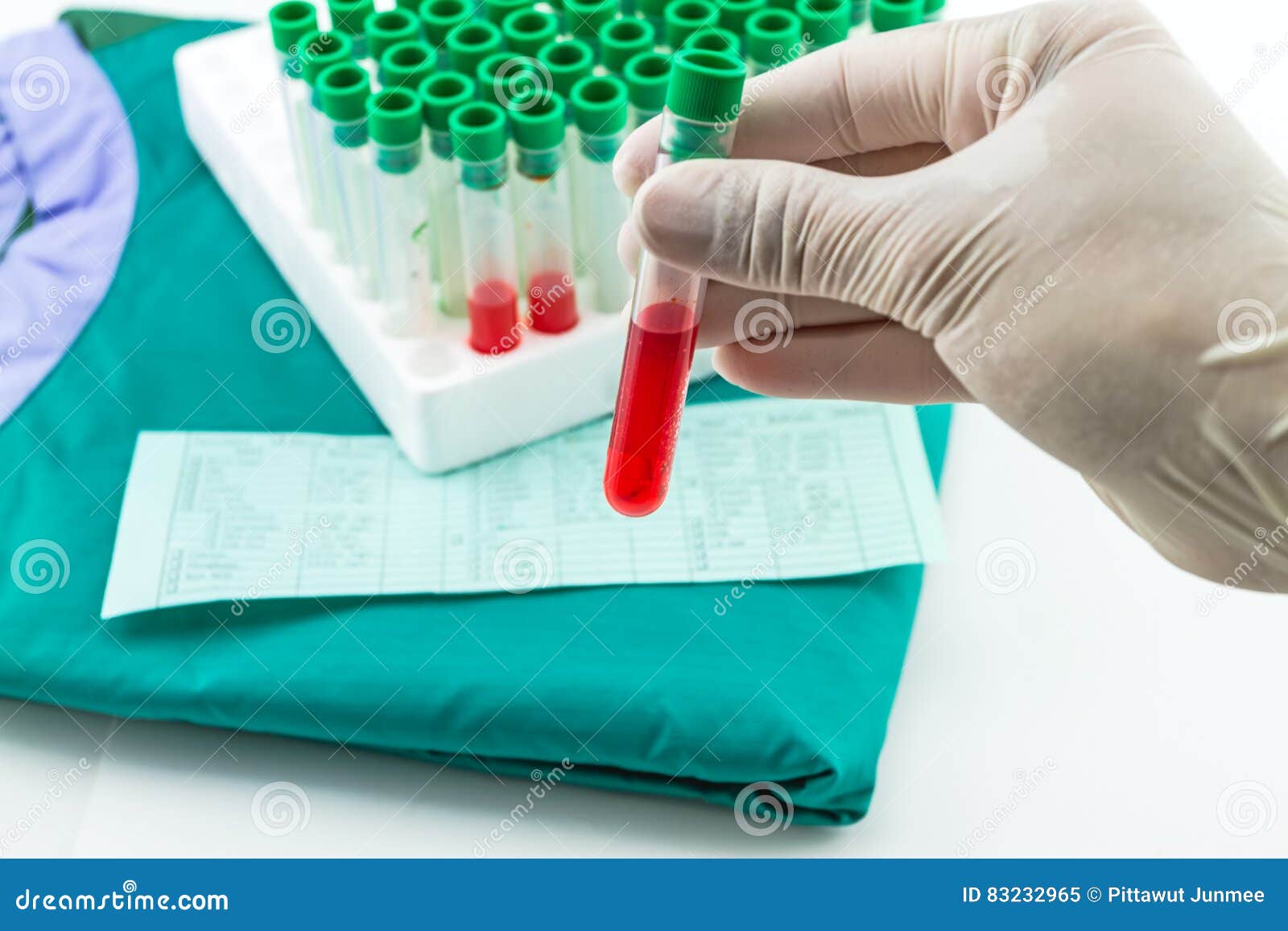
Low ALT Levels: Significance and Considerations
While elevated ALT levels often indicate liver problems, low ALT levels are generally not associated with specific medical conditions.
Are low ALT levels a cause for concern?
No known medical problems are directly associated with ALT levels lower than the normal range. However, it’s important to note that:
- Sometimes, test results may be lower than normal without indicating a problem
- Consistently low ALT levels should still be discussed with a healthcare provider to rule out any underlying issues
ALT in Relation to Other Liver Enzymes
ALT is often measured alongside other liver enzymes, particularly AST (Aspartate Aminotransferase). The relationship between these enzymes can provide valuable diagnostic information.
What is the significance of the AST:ALT ratio?
The AST:ALT ratio can help differentiate between various liver conditions:
- Viral hepatitis: AST:ALT ratio typically less than 1
- Alcoholic hepatitis: AST:ALT ratio often greater than 2
- Toxic or ischemic liver injury: AST:ALT ratio greater than 1 in early stages

These ratios, combined with the magnitude of ALT elevation, can provide valuable clues about the underlying cause of liver dysfunction.
Monitoring ALT Levels in Chronic Liver Conditions
For patients with chronic liver conditions, regular ALT monitoring is crucial for assessing disease progression and treatment effectiveness.
How do ALT levels behave in chronic hepatitis?
In chronic hepatitis conditions:
- Hepatitis C: ALT levels may fluctuate between normal and abnormal. 15 to 50% of patients with chronic hepatitis C have persistently normal ALT levels
- Viral hepatitis: ALT increases before and peaks near the onset of jaundice. It then falls slowly, at an average rate of 10% per day, remaining elevated for about 27 ± 16 days
What is the best ALT discriminant value for acute hepatic injury?
The best ALT discriminant value for recognizing acute hepatic injury is 300 U/L. This threshold helps differentiate between acute liver damage and more chronic or less severe conditions.
Lifestyle Factors Affecting ALT Levels
Various lifestyle factors can influence ALT levels, making it important for individuals to be aware of how their choices may impact their liver health.

How does alcohol consumption affect ALT levels?
Excessive alcohol consumption can significantly impact ALT levels:
- Regular heavy drinking can lead to alcoholic hepatitis, causing ALT elevations 2-8 times the upper limit of normal
- The AST:ALT ratio in alcoholic liver disease is typically greater than 2, distinguishing it from other forms of liver damage
- Reducing or eliminating alcohol intake can help lower elevated ALT levels in many cases
What role does diet play in ALT levels?
Diet can significantly influence ALT levels and overall liver health:
- A diet high in processed foods and saturated fats can contribute to non-alcoholic fatty liver disease (NAFLD), leading to elevated ALT levels
- Consuming a balanced diet rich in fruits, vegetables, whole grains, and lean proteins can help maintain healthy ALT levels
- Certain nutrients, such as vitamin E and omega-3 fatty acids, may have protective effects on the liver
Can exercise impact ALT levels?
Exercise can have both positive and negative effects on ALT levels:
- Regular moderate exercise can improve liver health and help maintain normal ALT levels
- Intense or prolonged exercise may temporarily elevate ALT levels due to muscle breakdown
- For individuals with liver conditions, it’s important to consult a healthcare provider about appropriate exercise regimens
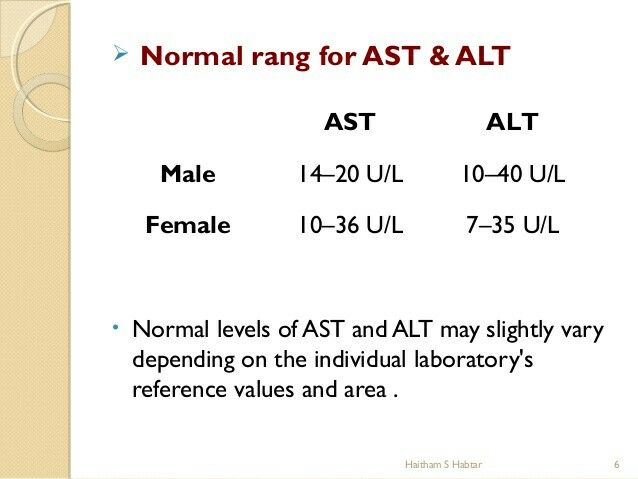
Managing Abnormal ALT Levels: Treatment and Prevention
When ALT levels are found to be abnormal, appropriate management strategies are crucial for improving liver health and preventing further damage.
What steps should be taken if ALT levels are abnormal?
If ALT levels are found to be outside the normal range, the following steps may be recommended:
- Further testing: Additional blood tests, imaging studies, or liver biopsies may be ordered to determine the underlying cause
- Medication review: A healthcare provider may adjust or discontinue medications that could be affecting liver function
- Lifestyle modifications: Changes in diet, exercise habits, and alcohol consumption may be recommended
- Treatment of underlying conditions: If a specific liver disease is diagnosed, appropriate treatment will be initiated
- Regular monitoring: Follow-up ALT tests may be scheduled to track changes over time
How can one prevent elevated ALT levels?
To maintain healthy ALT levels and overall liver function, consider the following preventive measures:
- Limit alcohol consumption
- Maintain a healthy weight
- Eat a balanced, nutritious diet
- Exercise regularly
- Avoid unnecessary medications and follow dosage instructions carefully
- Get vaccinated against hepatitis A and B
- Practice safe sex and avoid sharing needles to prevent viral hepatitis

By understanding the significance of ALT levels and taking proactive steps to maintain liver health, individuals can work towards preventing liver damage and ensuring overall well-being. Regular check-ups and open communication with healthcare providers are key to monitoring and managing ALT levels effectively.
ALT (SGPT) Test – Tufts Medical Center Community Care
What is the ALT test?
This blood test measures an enzyme called alanine transaminase (ALT). Enzymes are chemicals that help the cells of your body work. ALT is an enzyme made in the liver. It is released into the blood when tissues are damaged.
This enzyme is also called serum glutamic-pyruvic transaminase, or SGPT.
Why is this test done?
The ALT test checks for and measures damage to the liver. It is also done to check medical treatments that may affect the liver.
How do I prepare for this test?
- You may need to avoid taking certain medicines before the test because they might affect the test result. Make sure your healthcare provider knows about any medicines, herbs, or supplements that you are taking. Ask your provider before stopping any of your regular medicines.
- Talk to your healthcare provider if you have any questions about the test.

How is the test done?
Having this test will take just a few minutes. A small amount of blood is taken from a vein in your arm with a needle. The blood is collected in tubes and sent to a lab.
Ask your healthcare provider when and how you will get the result of the test.
What does the test result mean?
Some of the reasons your ALT level may be much higher than normal (up to 50 times the upper limit of normal) are:
- You have liver damage from an acute viral infection such as hepatitis.
- You have liver damage caused by medicines you have taken.
Your ALT levels may be higher than normal also if:
- You drink too much alcohol.
- You have mononucleosis.
- You have liver or gallbladder disease, such as gallstones, liver cancer, or liver failure.
- You have a muscle injury.
- You are taking a medicine that affects the test result.
No medical problems are known to cause an ALT level that is lower than normal. Sometimes the test result may be lower than normal but it does not mean there is a problem.
Sometimes the test result may be lower than normal but it does not mean there is a problem.
What if my test result is not normal?
Test results are only one part of a larger picture that takes into account your medical history, physical exam, and current health. Sometimes a test needs to be repeated to check the first result. Talk to your healthcare provider about the results and ask questions, such as:
- If you need more tests
- What kind of treatment you might need
- What lifestyle, diet, or other changes you might need to make
Adult Advisor 2015.1 published by RelayHealth.
Last modified: 2013-10-18
Last reviewed: 2014-02-03
This content is reviewed periodically and is subject to change as new health information becomes available. The information is intended to inform and educate and is not a replacement for medical evaluation, advice, diagnosis or treatment by a healthcare professional.
Copyright ©1986-2015 McKesson Corporation and/or one of its subsidiaries. All rights reserved.
All rights reserved.
Alanine Aminotransferase Exeter Clinical Laboratory International
Alanine Aminotransferase Exeter Clinical Laboratory International
Entire website➔ Blood Sciences➔ Cellular Pathology➔ Genomics ⤷ Clinical Genetics ⤷ Diabetes ⤷ Endocrinology ⤷ Haematology ⤷ Maternity ⤷ Neurology ⤷ Oncology ⤷ Ophthalmology ⤷ Paediatrics➔ Microbiology
Specimen
Clotted Blood
Lab tests online
Click here
Units
U/L
Reference Range
- Male 10 – 41
- Female 10 – 33
Test Usage
Alanine aminotransferase is an enzyme involved in the transfer of an amino group from the amino acid, alanine, to alpha-ketoglutaric acid to produce glutamate and pyruvate. ALT is located primarily in liver and kidney, with lesser amounts in heart and skeletal muscle. Increased ALT activity is more specific for liver damage than increased aspartate aminotransferase (AST) activity. ALT is seldom increased in patients with heart or muscle disease in the absence of liver involvement.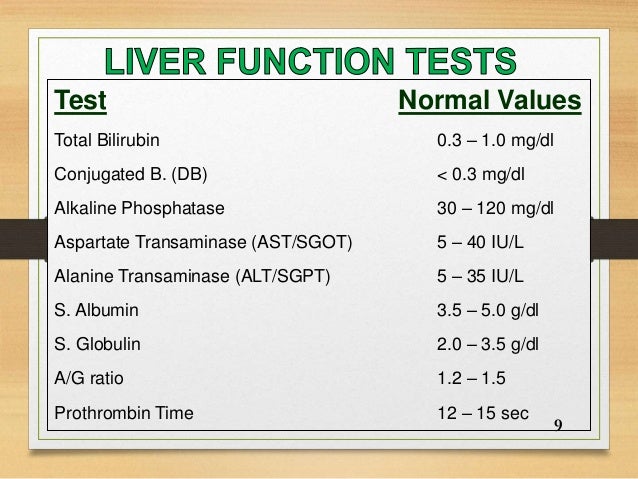 In healthy children, plasma ALT activity is lower than AST until 15 to 20 years of age. Thereafter, plasma ALT activity tends to be higher than AST activity until age 60, when the activities become roughly equal. The half-life of ALT in the circulation is 47 +/- 10 hours.
In healthy children, plasma ALT activity is lower than AST until 15 to 20 years of age. Thereafter, plasma ALT activity tends to be higher than AST activity until age 60, when the activities become roughly equal. The half-life of ALT in the circulation is 47 +/- 10 hours.
ALT activity in the liver is 3000 fold higher than in serum. Measurement of serum ALT activity is a good indicator of hepatocyte injury.
| Disease | Peak ALT x ULN | AST:ALT Ratio | Peak Bilirubin | Protime Prolongation |
| Viral hepatitis | 10 – 40 | <1 | <15 | <3 |
| Alcoholic hepatitis | 2 – 8 | >2 | <15 | 1 – 3 |
| Toxic injury | >40 | >1 early | <5 | >5 transient |
| Ischaemic injury | >40 | >1 early | <5 | >5 transient |
X ULN = times upper limit of normal, Protime prolongation is number of seconds above ULN
- The best ALT discriminant value for recognizing acute hepatic injury is 300 U/L.

- ALT increases before & peak near onset of jaundice in viral hepatitis. Activity falls slowly, an average of 10% per day. ALT remains elevated 27 +/- 16 days.
- ALT levels fluctuate between normal and abnormal in hepatitis C. 15 to 50% of patients with chronic hepatitis C have persistently normal ALT.
- In uncomplicated alcoholic hepatitis, ALT values are almost never >10 times the upper reference limit.
- Extremely elevated ALT levels are common in toxic hepatitis and hepatic ischemia secondary to circulatory collapse and heatstroke. 90% of cases with ALT >3000 U/L are due to toxic or ischemic injury. AST is usually higher than ALT and both enzymes peak in the first 24 hours after admission. After peaking, both levels fall rapidly; AST faster than ALT.
- Peak ALT levels bear no relationship to prognosis and may fall with worsening of the patients condition. In fulminant hepatic necrosis, decreasing ALT may signify a paucity of viable hepatocytes rather than recovery.

Patients with cirrhosis, non-alcoholic steatohepatitis, cholestatic liver disease, fatty liver and hepatic neoplasm typically have slightly raised serum ALT levels ( < 120 U/L). Patients with cirrhosis seldom have ALT levels higher than two times normal. Cirrhotic patients without ongoing liver injury the values may have normal values.
Other causes of elevated ALT include haemochromatosis, Wilson disease, autoimmune hepatitis, primary biliary cirrhosis, sclerosing cholangitis and alpha-1 antitrypsin deficiency. The medications most commonly associated with elevated ALT are sulfonamides, statins and isoniazid.
Helpful articles:
Pratt & Kaplan, NEJM 2000; 342: 1266-71 Evaluation of abnormal liver-enzyme results in asymptomatic patients
Dufour et al., Clin Chem 2000; 46: 2050-68 Diagnosis and monitoring of hepatic injury. II. Recommendations for use of laboratory tests in screening, diagnosis, and monitoring
Turnaround Time
1 day
Availability
Local
Can be added on to an existing request up to 4 days following sample receipt
Accreditation
Please note this test is not UKAS accredited
Specimen Labelling Procedure
General and specific IgE.
 Diseases and conditions accompanied by changes in the content of total IgE
Diseases and conditions accompanied by changes in the content of total IgE
- INVITRO
- Library
- Laboratory …
- General and specific …
Allergy
Helminths
Worms
Rhinitis
Urticaria
Ataxia
1297
12 October
Immunoglobulin E (IgE) is a class of immunoglobulins found normally in small amounts in blood serum and secretions. IgE was isolated for the first time in 1960s from the sera of patients with atopy and multiple myeloma. In 1968, WHO identified IgE as an independent class of immunoglobulins. According to WHO, 1 IU / ml (IU – international unit) corresponds to 2.4 ng. Usually the concentration of IgE is expressed in IU / ml or kU / l (kU – kilounit).
IgE was isolated for the first time in 1960s from the sera of patients with atopy and multiple myeloma. In 1968, WHO identified IgE as an independent class of immunoglobulins. According to WHO, 1 IU / ml (IU – international unit) corresponds to 2.4 ng. Usually the concentration of IgE is expressed in IU / ml or kU / l (kU – kilounit).
Normally, IgE is less than 0.001% of all serum immunoglobulins (see Table 1).
Table 1: The content of IgE in the blood serum of healthy people
| Age groups | IgE (ke/l) |
|---|---|
| Up to 1 year | 0 – 15 |
| 1 year-6 years | 0 – 60 |
| 6 -10 years | 0 – 90 |
| 10 -16 years old | 0 – 200 |
| adults | 0 – 100 |
The structure of IgE is similar to that of other immunoglobulins and consists of two heavy and two light polypeptide chains. They are grouped into complexes called domains. Each domain contains approximately 110 amino acids. IgE has five such domains, in contrast to IgG, which has only four. According to the physicochemical properties, IgE is a glycoprotein with a molecular weight of approximately 1
They are grouped into complexes called domains. Each domain contains approximately 110 amino acids. IgE has five such domains, in contrast to IgG, which has only four. According to the physicochemical properties, IgE is a glycoprotein with a molecular weight of approximately 1
daltons, consisting of 12% carbohydrates. IgE has the shortest lifespan (half-life from blood serum 2-3 days), the highest rate of catabolism and the lowest rate of synthesis of all immunoglobulins (2.3 µg/kg per day). IgE is synthesized mainly by plasma cells localized in the mucous membranes. The main biological role of IgE is the unique ability to bind to the surface of human mast cells and basophils. On the surface of one basophil there are approximately 40,000 – 100,000 receptors that bind from 5,000 to 40,000 IgE molecules.
Degranulation of mast cells and basophils occurs when two IgE molecules associated with the cell membrane bind to an antigen, which in turn “turns on” successive events leading to the release of inflammatory mediators.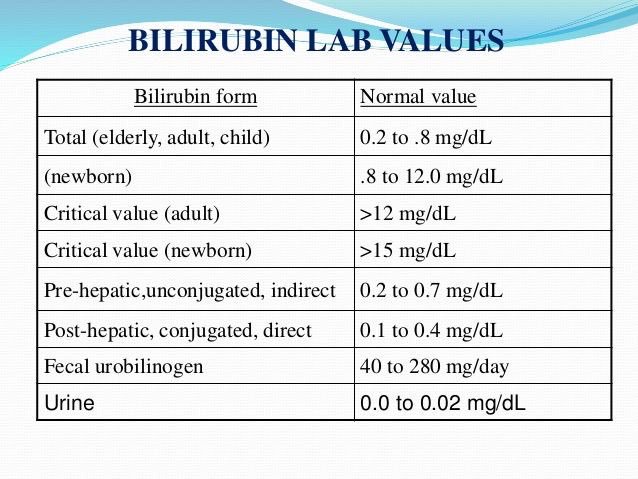
In addition to being involved in type I (immediate) allergic reactions, IgE is involved in protective helminthic immunity, which is due to the existence of cross-linking between IgE and the helminth antigen. The latter penetrates the mucosal membrane and sits on mast cells, causing their degranulation. Inflammatory mediators increase capillary and mucosal permeability, resulting in IgG and leukocytes leaving the bloodstream. IgG-coated helminths are joined by eosinophils, which eject the contents of their granules and thus kill the helminths.
IgE can be detected in the human body as early as the 11th week of fetal development. The content of IgE in the blood serum increases gradually from the moment of birth of a person until adolescence. IgE levels may decrease with age.
In the practice of clinical diagnostic laboratories, the determination of general and specific IgE is carried out in order to use them as independent diagnostic indicators. In table. 2 lists the main diseases and conditions accompanied by a change in the content of total IgE in blood serum.
2 lists the main diseases and conditions accompanied by a change in the content of total IgE in blood serum.
Table 2: Diseases and conditions associated with changes in total serum IgE
| Diseases and conditions | Possible reasons |
| I. Increased content of IgE | |
|---|---|
| Allergic diseases due to IgE antibodies: a) Atopic diseases Allergic rhinitis · Atopic bronchial asthma Atopic dermatitis Allergic gastroenteropathy b) Anaphylactic diseases Systemic anaphylaxis Urticaria – angioedema | Multiple allergens: pollen dust epidermal food medicinal preparations chemicals metals foreign protein |
| Allergic bronchopulmonary aspergillosis | Unknown |
| Helminthiases | IgE antibodies associated with protective immunity |
| Hyper-IgE syndrome (Job’s syndrome) | T-suppressor defect |
| Selective IgA deficiency | T-suppressor defect |
| Wiskott-Aldridge Syndrome | Unknown |
| Thymus aplasia (DiGeorge syndrome) | Unknown |
| IgE – myeloma | IgE-producing plasma cell neoplasia |
| graft-versus-host disease | T-suppressor defect |
II. Decreased total IgE Decreased total IgE | |
| Ataxia – telangiectasia | T cell defects |
Below are given as examples the ranges of total IgE serum levels (in adults) in some pathological conditions (Table 3). However, despite the initial apparent ease of using the determination of total and specific IgE for diagnosis, there are some difficulties in interpreting the results. Their list is given below.
Table 3: Total IgE values in some pathological conditions
| Pathological conditions | IgE content (ke/l) |
|---|---|
| allergic rhinitis | 120 – 1000 kU/l |
| Atopic bronchial asthma | 120 – 1200 kU/l |
| Atopic dermatitis | 80 – 14000 kU/l |
| Allergic bronchopulmonary aspergillosis: – remission – aggravation | 80 – 1000 kU/l 1000 – 8000 kU/l |
| Hyper – IgE syndrome | 1000 – 14000 kU/l |
| IgE – myeloma | 15000 kU/l and above |
Features of interpretation and diagnostic limitations of total IgE
- Approximately 30% of patients with atopic diseases have a level of total IgE within the normal range.

- Some people with asthma may have hypersensitivity to only one allergen (antigen), resulting in total IgE being in the normal range, while skin testing and specific IgE will be positive.
- The concentration of total IgE in the blood serum also increases in non-atopic conditions (especially with helminthic invasion, some forms of immunodeficiency and bronchopulmonary aspergillosis) with subsequent normalization after appropriate treatment.
- Chronic recurrent urticaria and angioedema are not mandatory indications for the determination of total IgE, as they are usually non-immune in nature.
- The normal limits defined for Europeans cannot be applied to representatives of areas endemic for helminthiases.
Features of interpretation and diagnostic limitations of specific IgE
- Availability of specific IgE determination should not exaggerate its diagnostic role in the examination of patients with allergies.

- Detection of allergen-specific IgE (to any allergen or antigen) does not prove that this particular allergen is responsible for clinical symptoms; the final conclusion and interpretation of laboratory data should be made only after comparison with the clinical picture and the data of a detailed allergic history.
- The absence of specific IgE in peripheral blood serum does not exclude the possibility of an IgE-dependent mechanism, since local IgE synthesis and mast cell sensitization can occur in the absence of specific IgE in the bloodstream (for example, allergic rhinitis).
- Antibodies of other classes specific for this allergen, especially the class IgG (IgG4), may cause false negative results.
- Exceptionally high concentrations of total IgE, for example, in individual patients with atopic dermatitis, may, due to non-specific binding to the allergen, give false positive results.
- Identical results for different allergens do not imply the same clinical significance, since the ability to bind to IgE in different allergens may be different.

Table 4: Indications and contraindications for specific IgE testing
| Indications | |
|---|---|
| 1 | Differential diagnosis between IgE-dependent and non-IgE-dependent mechanisms of allergic reactions |
| 2 | Patients in whom it is impossible to identify the allergen by anamnestic history, using a diary, etc. |
| 3 | Patients with insufficient effect of specific hyposensitization prescribed based on the results of skin tests |
| 4 | Dermographism and widespread dermatitis |
| 5 | Patients of childhood and the elderly with skin hyporeactivity |
| 6 | Skin hyperreactivity |
| 7 | Patients who cannot stop symptomatic therapy with drugs that affect the results of skin tests |
| 8 | Negative attitude of the patient to skin tests |
| 9 | History of systemic allergic reactions to skin tests |
| 10 | Inconsistency of the results of skin tests with the data of the anamnesis and the clinical picture |
| eleven | IgE-dependent food allergy |
| 12 | The need to quantify the sensitivity and specificity of the allergen |
| 13 | Total IgE of blood serum more than 100 kU/l |
| Examination is inappropriate: | |
| 1 | In atopic diseases in cases of satisfactory results of specific therapy according to skin tests |
| 2 | In patients with a non-IgE-dependent mechanism of an allergic reaction |
Related links: Immunoglobulin E, IgE general (allergodiagnostics), allergen panels.
Sources:
- Macharadze D.Sh. Modern clinical aspects of assessing the levels of general and specific IgE // Pediatrics. 2017; 96(2): 121-127.
- Rybnikova E.A., Prodeus A.P., Fedoskova T.G. Modern approaches to the laboratory diagnosis of allergies – to help the practitioner // BC. Medical review. – No. 1 dated 04/26/2021. – pp. 43-49. DOI: 10.32364/2587-6821-2021-5-1-43-49
IMPORTANT!
The information in this section should not be used for self-diagnosis or self-treatment. In case of pain or other exacerbation of the disease, only the attending physician should prescribe diagnostic tests. For diagnosis and proper treatment, you should contact your doctor.
For a correct assessment of the results of your analyzes over time, it is preferable to do studies in the same laboratory, since different laboratories may use different research methods and units of measurement to perform the same analysis.
Recommendations
PSA (prostate specific antigen) test
58
may 13
Human papillomavirus
2013
04 May
Alkaline phosphatase
17412
16 April
Show more
Allergy
Cold
Pyelonephritis
Encephalitis
Gout
Cystitis
CBC
CBC without leukocyte formulas and ESR: indications for the appointment, rules for preparing for the analysis, decoding of the results and indicators of the norm
More
Gastritis
Pancreatitis
Worms
Vitamin B12
Vitamin B12: indications for prescription, rules for preparing for the test, interpretation of the results and norm indicators.
More
Dysbacteriosis
Allergy
Fecal analysis
Giardia: questions and answers
Good afternoon! At my daughter a dysbacteriosis (judging by anazizam). The doctor prescribed to drink acipol, but there was little sense. I have suspicions, maybe my daughter has some kind of parasites in her body. Tell, on what parasites it is necessary to hand over that though it to exclude. the child periodically pours out, from acipol a little sense. Thank you.
More
Iron deficiency
Worms
Allergy
Clinical blood test
Clinical blood test: indications for prescription, rules for preparing for the test, interpretation of the results and norm indicators.
More
Allergy
Urticaria
Diarrhea
Anaphylactic shock
Latex allergy or allergic “AIDS”
In 1927, an allergic reaction to latex was first described, but virtually unnoticed. Only half a century later, this allergy became the object of close attention, study and practical development of methods for diagnosis, prevention and treatment.
Only half a century later, this allergy became the object of close attention, study and practical development of methods for diagnosis, prevention and treatment.
More
Interpretation of MAR test results | Clinical Andrology Laboratory
The MAR test determines the number of spermatozoa coated with antisperm antibodies (ASAT). Their presence reduces the likelihood of fertilization of the egg and can lead to infertility. According to WHO recommendations from 2010, the MAR test is a mandatory analysis after the semen analysis. If the motility of spermatozoa is significantly reduced or they are completely absent in the semen, an indirect study with donor spermatozoa is prescribed.
What are the possible results
Negative. The absence of antibodies indicates the normal operation of the hemato-testicular barrier, that is, the immune system fights foreign microorganisms only in the blood and does not switch to sperm. A negative test with rates up to 10% means that the number of healthy spermatozoa is sufficient for the natural fertilization of the egg.
A negative test with rates up to 10% means that the number of healthy spermatozoa is sufficient for the natural fertilization of the egg.
Positive. MAR-test determines 2 types of ASAT:
- IgG – produced by the prostate and vesicles;
- IgA – produced in the testicles.
If the test shows between 10 and 50% of sperm coated with antisperm antibodies, the chance of pregnancy is reduced. If the rate is above 50%, the diagnosis is “autoimmune male infertility”.
In addition to the percentage of antibodies, the study determines the localization of ACAT. Attached to the tail, they slow down the speed of movement, to the head – they do not allow the fertilization of the egg.
Causes of spermatozoa damage ACAT
The reasons for the production of antisperm antibodies and, as a result, the risk of autoimmune infertility may be:
- testicular injury;
- infection in the urinary tract;
- congenital pathology of the vas deferens;
- spinal cord injury;
- testicular torsion;
- STD or other disease.



